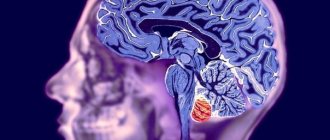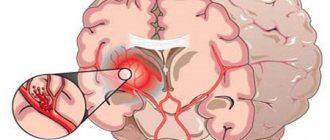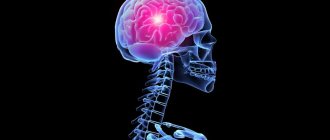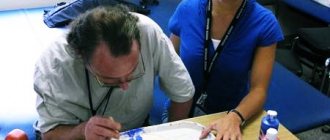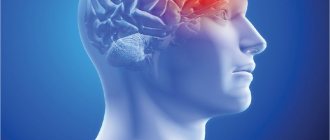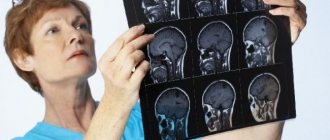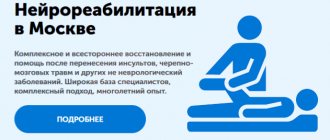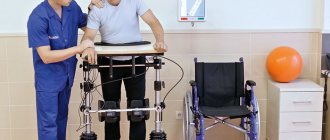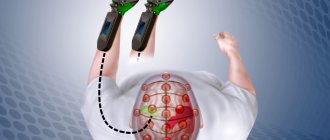Despite the safety measures taken, brain injuries, unfortunately, occur quite often. Today we will discuss concussion. My son was several years old when he was running and jumping during a walk and fell headfirst. Like all parents, first of all, there is fear, a feeling of guilt, then the realization of what to do next. What to pay attention to, what symptoms to monitor, whether you need to go to the hospital, whether examination and observation in a hospital is necessary, what kind of recovery is necessary. Let's try to answer these questions.
A concussion is a mild traumatic brain injury that disrupts brain function. The following concussion symptoms and effects are usually temporary.
For colleagues: a concussion refers to the so-called mild traumatic brain injury (Mild Traumatic Brain Injury). This is an acutely developed disorder of brain function, resulting from a blunt impact with sudden acceleration, deceleration or rotation of the head, in which the patient is clearly conscious upon admission to the hospital or the level of wakefulness is reduced to moderate stupor, and a short-term loss of consciousness (up to 30 minutes) may occur. ) and/or amnesia (up to 24 hours), and/or transient neurological symptoms (focal symptoms or seizures), with a Glasgow Coma Scale (GCS) score of 13-15 points.
Example: A minor head injury or concussion is when a child:
- there may have been a short-term loss/change in level of consciousness during the injury
- but now the child is conscious and interacting with you
- he may have vomited, but only once
- there may be bruises or cuts on the head
- Otherwise everything is fine.
Symptoms of a concussion
Check for symptoms immediately after injury and for several (2-3 days).
All concussion symptoms can be divided into 5 subtypes (Lumba-Brown et al. Neurosurgery 2020):
- Headache/migraine (the most common symptom in children and adolescents, often with aura, nausea/vomiting, sensitivity to light/sound/smell; if children have previously suffered from headaches, then after a concussion the frequency and severity of pain increases).
- Oculomotor disorders (dysfunction of the visual system - problems with focusing, photophobia, double vision, eye fatigue, etc.).
- Vestibular disorders (impaired movement and orientation of the body in space and time; dizziness; nausea/vomiting).
- Emotional disturbances (mood changes - restlessness, anxiety, depression, sadness, fatigue, sometimes anger and irritability).
- Cognitive impairment (impaired concentration, memory, reaction speed, decreased mental performance).
Sleep disturbance is also a common condition associated with concussion.
Common signs and symptoms of a concussion may include:
- Headache or feeling of pressure in the head
- Nausea or vomiting
- Balance problems or dizziness
- Double or blurry vision
- Sensitivity to light or noise
- Feeling tired, lethargic, drowsy, or dazed
- Difficulty with attention
- Memory problems
- Confusion
- Slowness in understanding and reacting to others
- Sleep problems
- Mood swings and irritability
- Changes in behavior
- Personality changes
Children who have suffered a head injury may develop symptoms at different times. Some of the symptoms may appear minutes or hours after the initial injury, while others may take days or weeks to appear.
Severity of TBI
There are several degrees of severity of traumatic brain injury:
- Mild TBI - concussion and contusion of the brain - this type of injury is the most common and mild in clinical manifestations (short-term loss of consciousness, dizziness, nausea, and sometimes vomiting). Treatment involves strict bed rest for 7-10 days. Most often, the patient does not need rehabilitation measures;
- Moderate TBI - moderate brain contusion. Clinically manifested by switching off consciousness, impaired attention, disorientation in time, surrounding environment, epileptic seizures, which can manifest itself within 7-12 days after clearing consciousness;
- Severe TBI - severe contusion and compression. Clinically, there may be focal hemispheric and brainstem symptoms, hyperkinesis, increased muscle tone, followed by hypotension, motor excitation,. Focal symptoms regress slowly, often with pronounced consequences in the form of motor and mental disorders.
Initial consultation with a rehabilitation specialist
+8
Record
Do I need to seek medical help?
You should contact your doctor (pediatrician/neurologist) if your child has any of the above symptoms of mild head injury and you are concerned about them. Otherwise, continue to monitor your child at home for any of the warning signs and symptoms described below.
Threatening symptoms requiring emergency care and examination by a doctor at the nearest hospital:
- vomiting more than once
- bleeding or any discharge from the ear or nose
- seizures/convulsions/twitching
- inability to recognize people or places
- severe drowsiness
- loss of consciousness
- incessant crying
- one pupil is larger than the other
- blurred vision or double vision
- poor coordination or clumsiness
- any new weakness in an arm or leg, or any existing weakness that gets worse or does not improve
- difficulty swallowing or coughing while eating or drinking
- noise sensitivity
- slurred or unclear speech
- unusual or confusing behavior
- severe or persistent headache that does not respond to paracetamol
- the injury was caused by high speed and/or altitude
What are the types of head injuries?
Dividing traumatic brain injury into types and types helps to choose the right treatment, prevent and prevent the consequences of injury.
Based on the type of injury, TBI is divided into open and closed. TBI without damage to the aponeurosis is considered closed. Aponeurosis
A wide connective tissue plate that attaches muscles to bones or other tissues. and meninges. The open type includes cases with damage to these structures and fractures of the base of the skull, accompanied by leakage of cerebrospinal fluid (cerebrospinal fluid) from the nasal passage or ear, and possible bleeding.
The severity of the injury is determined by the clinical manifestations of TBI and the data of diagnostic examinations (tomograms of the head or x-rays of the skull bones). The severity of the injuries determines the success of treatment and the risk of developing irreversible consequences of TBI.
In the mildest clinical form of injury - concussion - the symptoms are reversible, and their treatment is based on observation, symptomatic therapy (analgesics, sedatives, etc.) and prevention of possible complications (neuroprotectors Neuroprotectors
Medicines that prevent damage to nerve cells in the brain from adverse effects.
Their influence is aimed at eliminating or reducing disturbances in nerve cells.). With a concussion, short-term loss of consciousness, headache, single vomiting and sleep disturbance are possible. These and other symptoms disappear in 2-7 days. For a concussion, treatment should also include bed rest for several days.
The decision to hospitalize is made by the doctor after examining and examining the patient with suspected head injury. Brain contusion is accompanied by more significant damage to nerve tissue and is divided according to severity. The severity of the injury is determined by a combination of signs: the duration of loss of consciousness, the severity of neurological symptoms (speech impairment, mental disorders, paresis
Decreased strength in a muscle or muscle group.
etc.), data from diagnostic examinations. In case of brain contusion, treatment depends on the manifestations of the disease and the presence of intracerebral hematoma. If there is bleeding in the brain tissue or under the membranes of the brain, surgical treatment is often required. In case of brain contusion, the death of neurons can occur due to direct destruction of brain tissue at the time of injury, as well as under the influence of intracerebral hemorrhage and increased intracranial pressure (ICP).
Is additional examination necessary?
Neuroimaging (CT and MRI studies) are not routinely recommended for concussion. The PECARN and CHALICE algorithms are used to determine the need for neuroimaging in the world. Below (more for doctors) these algorithms are presented, on the basis of which we make decisions. It is helpful for parents to understand what constitutes a dangerous mechanism of injury at different ages.
**Dangerous mechanisms of injury
:
- Road traffic accidents, if a child is thrown out of a car; if another passenger is killed; if the child moved on roller skates; collision of a car/motorcycle with a pedestrian or cyclist without a helmet.
- A fall from a height of more than 1.5 meters in a child aged 2 years or older, or more than 90 cm in a child under 3 years of age.
- Hitting the head with an object moving at high speed.
Low hazard mechanisms of injury:
- Falling to the floor.
- Collision with a stationary object.
The remaining mechanisms of injury are considered moderately dangerous. (openneuro.ru)
Serious consequences
Traumatic brain injury (TBI) is the result of damage to the bones of the skull and brain tissue. This is one of the main causes of disability and mortality in working age. After a traumatic brain injury, massive death of neurons occurs. Neuron
A nerve cell consisting of a body and processes extending from it. A structural unit of the nervous system, which can be immediate - primary and delayed - secondary.
Primary damage to nerve cells due to mechanical impact occurs according to the following scheme:
- Trauma causes damage to brain tissue and skull bones. Mechanical impact causes displacement of layers of nerve cells, as well as direct damage to their membranes and processes
- There is a disruption of normal connections between nerve cells and an increase in intracranial pressure. This may be accompanied by impaired nutrition of surviving neurons
- The result is a temporary dysfunction of nerve cells or their death.
However, in case of a bruise or concussion, treatment must also take into account another mechanism of damage to the nervous tissue, which is called secondary.
Secondary damage to brain cells is no less dangerous. It occurs due to the fact that in traumatic brain injury, the death of neurons during primary damage triggers a complex biochemical process or cascade of reactions that provokes the expansion of the affected area with the capture of healthy cells:
- When the brain is compressed or bruised, an inflammatory reaction develops around damaged nerve cells, tissue swelling, local disruption of blood flow and lack of oxygen supply to neighboring neurons.
- These changes lead to a decrease in functional activity and metabolism in healthy cells and to their gradual death. In addition, the formation of colonies of cells that are defective in function occurs, prone to subsequent “programmed” death - apoptosis Apoptosis A
natural mechanism of cell death and their effective removal from the tissue.. Against the background of these changes, there is a risk of damage to blood vessels and intracerebral hemorrhages after injury.
For different types of traumatic brain injury, treatment should help prevent and eliminate the risk of such complications.
How can I help my child recover from a concussion?
Most children recover within 1 month. In 30% of children, symptoms persist for more than 1 month. These children may benefit from additional treatments.
- After a minor head injury, your child will need plenty of rest and sleep, especially in the first 24 to 48 hours.
- For headaches, use ibuprofen and paracetamol, and remove bright lights and noise if they are triggers. Wear sunglasses or a hat for your child in bright light.
- Let teachers know that children may need an individualized learning plan with more time to complete work or a lighter workload.
- Reduce the workload or number of activities at school and at home, take rest breaks during the day, and provide your child with a place where he can be quiet.
- Reduce the amount of screen time.
- Help your child avoid noisy/crowded places.
- Follow the routine and sleep hygiene so that the child goes to bed on time and in a calm environment.
- Keep a positive attitude.
- Avoid activities that may cause re-injury.
The most important effects of Semax 0.1% include:
- Acceleration of recovery from coma and amnesia;
- Restoration of motor and sensory functions, due to improved creation of new connections between neurons, to replace the lost ones;
- Restoration of cognitive functions Cognitive functions
Functions of the brain through which the process of understanding the world is carried out. These include memory, attention, psychomotor coordination, speech, counting, thinking, orientation, planning and control of higher mental activity, improvement of attention, mental state; - Improvement and restoration of memory after traumatic brain injury , due to the influence on all stages of the process (memorization, processing and reproduction of information);
- Relieving post-traumatic depression;
- Normalization of the work of vegetative centers;
- Prevention of encephalopathy Encephalopathy
A disease in which brain tissue changes. Which leads to disruption of its function. and loss of work skills
Thanks to the pronounced neuroprotective properties Neuroprotectors
Medicines that prevent damage to nerve cells in the brain from adverse effects.
Their influence is aimed at eliminating or reducing disturbances in nerve cells. activity and ability to stimulate repair Reparation
A function of cells that consists in the ability to correct various damages.
It is carried out by special enzyme systems of the cell. Neurons Semax helps to effectively treat traumatic brain injury and its consequences.

